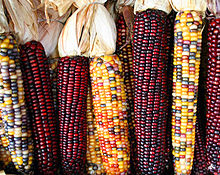
Xenia (also known as the Xenia effect) in plants is the effect of pollen on seeds and fruit of the fertilized plant.[1] The effect is separate from the contribution of the pollen towards the next generation.
The term was coined in 1881 by the botanist Wilhelm Olbers Focke to refer to effects on maternal tissues, including the seed coat and pericarp, but at that time endosperm was also thought to be a maternal tissue, and the term became closely associated with endosperm effects.[1] The term metaxenia was later coined and is still sometimes used to describe the effects on purely maternal tissues.[1]
- ^ a b c Denney, J.O. (1992). "Xenia includes metaxenia". HortScience. 27 (722–728): 722–728. doi:10.21273/HORTSCI.27.7.722.